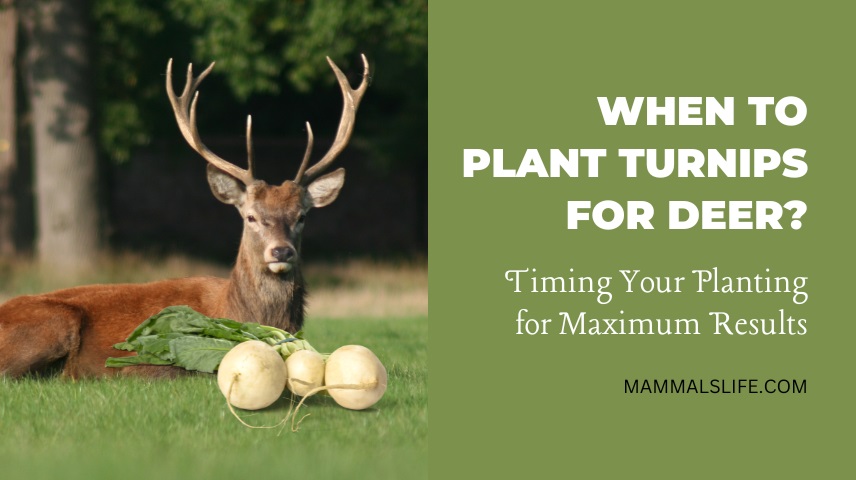Last Updated on February 22, 2025 by Mammals Life
Deer, particularly white-tailed deer in North America, are among the most studied mammals due to their significant ecological and economic roles. Their movements are driven by a complex interplay of seasonal changes, food availability, and environmental conditions. Understanding these movements is crucial for effective wildlife management, conservation efforts, and even hunting strategies.
Importance of Understanding Deer Movement
Tracking and understanding the movement patterns of deer is vital for several reasons. It helps wildlife managers make informed decisions about habitat protection and population control. For hunters, knowing where deer are likely to be during different times of the year can lead to more successful hunts. Additionally, understanding deer movement can help mitigate human-deer conflicts, such as deer-vehicle collisions.
Factors Influencing Deer Movement
Seasonal Changes
Deer are highly responsive to seasonal changes. As the seasons shift, so do their behaviors and movement patterns. In the spring, deer are often found expanding their range as they search for new growth and food sources. Summer sees them moving to areas with abundant water and shade, while in the fall, the rutting season drives bucks to cover large distances in search of mates. Winter, on the other hand, often forces deer to migrate to areas where food is still accessible, and they can conserve energy.
Availability of Food Sources
Food availability is a primary driver of deer movement. During times of abundance, such as the fall when acorns and other nuts are plentiful, deer may not need to travel far to meet their nutritional needs. However, during winter or in areas where food is scarce, deer will cover more ground to find sustenance. Agricultural areas can also influence movement patterns, with deer frequently moving between crop fields and wooded areas.
Habitat and Terrain
The type of habitat and terrain plays a significant role in how far and where deer travel. In dense forests, deer may have a smaller home range due to the abundance of cover and food. In contrast, in open fields or mountainous regions, deer may need to travel further to find suitable food and shelter. Additionally, deer often use natural corridors such as riverbanks, ridgelines, and valleys to navigate through different terrains.
Human Activity
Human presence and activities significantly impact deer movement. In areas with high hunting pressure, deer may become more nocturnal and seek refuge in less accessible areas. Urbanization also forces deer to adapt, often leading them to move into suburban areas where they can find food in gardens and parks. Roads and highways present barriers that can alter deer movement, sometimes leading to dangerous crossings and increased deer-vehicle collisions.
Read More – Managing Wildlife: Do Deer Eat Potato Plants and What Can You Do?
Seasonal Deer Movement Patterns
Spring
Spring is a time of renewal, and deer respond to the warming temperatures by expanding their range. Does, in particular, move to find suitable birthing areas, often seeking secluded spots away from predators. The availability of fresh vegetation encourages deer to explore new territories, leading to increased movement during this season.
Summer
During the summer, deer movements are largely dictated by the need for water and shade. They tend to stay close to water sources and areas with dense foliage that provide cover from the sun and predators. The hot weather can reduce daytime activity, with deer becoming more active during the cooler dawn and dusk hours.
Fall (Rut Season)
The fall season, particularly the rutting period, sees a dramatic increase in deer movement, especially among bucks. Driven by the need to find mates, bucks will cover large distances, often traveling miles in a single day. This increased movement also makes them more visible and vulnerable, which is why the fall is a prime time for hunters.
Winter
Winter poses the greatest challenge for deer, particularly in northern regions where snow can limit movement and access to food. To survive, deer often migrate to wintering grounds where food is more accessible, and there is shelter from the harsh weather. Their movement has become more conservative, focusing on energy conservation and survival.
Read More – Do Deer Eat Sweet Potatoes? Insights from Wildlife Experts
Typical Travel Distances of Deer
Average Daily Travel Distances
On average, deer travel between 1 to 2 miles per day, though this can vary significantly depending on the season and environmental conditions. During the rut, bucks may travel up to 10 miles or more in a day, while in winter, deer may move less than a mile, conserving energy and staying close to food sources.
Long-Distance Migrations
In certain regions, particularly in northern climates, deer exhibit long-distance migrations. These migrations can cover 50 miles or more as deer move from summer ranges to wintering areas. These movements are often predictable and have been documented over generations, with deer following the same routes each year.
Factors Affecting Travel Distances
Several factors can influence how far deer travel. The availability of food and water is a primary driver, but other factors such as predation, weather conditions, and human disturbances also play significant roles. For instance, in areas with abundant food and cover, deer may not need to travel far. Conversely, in regions with harsh winters or heavy hunting pressure, deer may cover greater distances to find safety and sustenance.
Tracking Deer Movement: Methods and Technologies
Traditional Tracking Methods
Historically, deer movement has been tracked through signs like tracks, scat, and bedding areas. These traditional methods, while still useful, are limited in the scope and detail they provide.
Modern Tracking Technologies
Today, wildlife biologists use advanced technologies such as GPS collars and telemetry to track deer movement with high precision. These tools provide real-time data on deer locations, allowing researchers to study movement patterns, home ranges, and migration routes in great detail.
Case Studies
Several tracking projects have provided valuable insights into deer movement. For example, studies in the Midwest have documented how deer respond to agricultural practices, while research in the northern U.S. has shed light on long-distance migrations to wintering grounds. These case studies help inform wildlife management practices and contribute to our understanding of deer behavior.
Read More – What Does It Mean When a Deer Crosses Your Path? Spiritual Insights
Implications of Deer Movement Patterns
Wildlife Management and Conservation
Understanding deer movement is crucial for effective wildlife management. It allows managers to create protected corridors, manage populations through hunting, and ensure that habitats are preserved. Conservation efforts also benefit from this knowledge, as it helps identify critical areas that need protection.
Impact on Hunting Strategies
For hunters, knowing when and where deer are likely to move can make the difference between a successful hunt and an empty freezer. By studying deer movement patterns, hunters can position themselves in areas with high deer activity, particularly during the rut or near food sources during the winter.
Deer-Vehicle Collisions
One of the most significant human-deer conflicts is vehicle collisions. By understanding deer movement, particularly during peak seasons like the fall rut, efforts can be made to reduce these collisions. This might include better signage, reduced speed limits in high-risk areas, and the creation of wildlife corridors that provide safe passage across roads.
FAQs
Why do deer migrate during certain seasons?
Deer migrate primarily in response to seasonal changes, particularly in regions with harsh winters. Migration allows them to move to areas with more accessible food and better shelter, helping them survive when resources in their home range become scarce. During winter, for example, deer may migrate to lower elevations or more sheltered areas where snow is less deep, and food is more available.
How far do deer typically travel in a day?
On average, deer travel between 1 to 2 miles per day, although this distance can vary significantly depending on the season and environmental factors. During the rutting season in the fall, bucks may cover much larger distances, sometimes up to 10 miles or more in a single day, as they search for mates. In contrast, during winter, deer may travel shorter distances to conserve energy and stay close to food sources.
What factors influence deer movement patterns?
Deer movement patterns are influenced by several factors, including seasonal changes, food availability, habitat type, and human activity. Seasonal changes dictate migration and breeding behaviors, while food availability can cause deer to travel farther in search of sustenance. Habitat and terrain affect how deer navigate their environment, and human activities like hunting or urbanization can alter their movement patterns, making them more cautious or nocturnal.
How can understanding deer movement help reduce deer-vehicle collisions?
Understanding deer movement, particularly during peak activity seasons like the fall rut, can help reduce deer-vehicle collisions. By knowing when and where deer are most likely to cross roads, wildlife managers can implement measures such as better signage, lower speed limits, and wildlife corridors that provide safe passage for deer. This knowledge allows for targeted efforts to reduce the risk of collisions in high-traffic areas.
What technologies are used to track deer movement?
Modern technologies such as GPS collars and telemetry are commonly used to track deer movement. These tools provide real-time data on deer locations, allowing researchers to monitor their movement patterns, home ranges, and migration routes with high precision. Trail cameras are also used to observe deer behavior and movements without disturbing them. These technologies have significantly advanced our understanding of deer ecology and are crucial for effective wildlife management.
Conclusion
Deer movement is a complex behavior influenced by various factors including seasons, food availability, habitat, and human activity. By understanding these patterns, we can better manage deer populations, enhance conservation efforts, and even improve hunting strategies.
The study of deer movement is ongoing, and continued research is essential to adapt to changing environmental conditions and human impacts. As technology advances, our ability to track and understand deer behavior will only improve, leading to more effective management and conservation practices.











